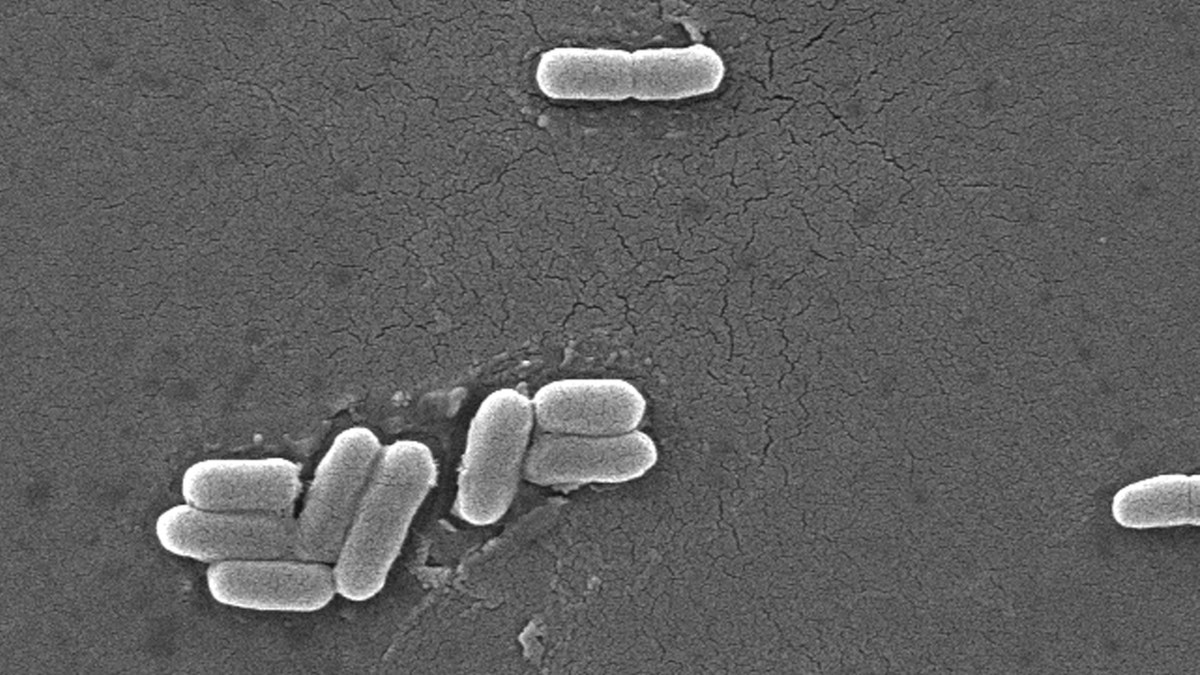E. Coli outbreak linked to romaine lettuce
Bacteria sickens nearly 100 people across 22 states; Claudia Cowan reports.
A specific strain of E. coli associated with leafy greens has been the source of ongoing enteric illness since late 2016, according to research published in a Centers for Disease Control and Prevention journal.
The article in the publication Emerging Infectious Diseases – led by Dr. Jessica Chen, who is a bioinformatician in the Division of Foodborne, Waterborne and Environmental Diseases at the CDC's National Center for Emerging and Zoonotic Infectious Diseases – found that the strain REPEXH02 is estimated to have emerged in late 2015.
The study's authors said the agency has classified the strain of E. coli O157:H7 as a reoccurring, emerging or persistent strain.
"We typically think of foodborne illness as either part of an outbreak or not," Chen told The Washington Post. "In 2019 we switched to using whole genome sequencing to look at the DNA of a strain and track the bacteria which cause foodborne illness. With this tool we can see if multiple outbreaks are caused by the same strain, and link related illnesses over months and years. We call strains that recur, are emerging or persisting over time REP strains of bacteria."

Gram-negative Escherichia coli bacteria of the strain O157:H7, revealed in the 7075x magnified scanning electron microscopic (SEM) image, in 2006. (Smith Collection/Gado/Getty Images)
Following analysis, an additional outbreak associated with the strain was detected in late 2020, during which 20 people were hospitalized and four developed hemolytic uremic syndrome. Hemolytic uremic syndrome, which is rare but serious, can impede blood clotting in infected people and cause kidney failure.
However, since then, no further outbreaks have been detected.
The article said E. coli O157:H7 is estimated to cause approximately 63,000 domestically acquired foodborne illnesses and 20 deaths across the U.S. annually.
Such infections are often associated with abdominal cramps, bloody diarrhea and vomiting, in addition to hemolytic uremic syndrome.

This transmission electron micrograph (TEM) from Jan. 1, 1995, revealed some of the ultrastructural morphology of a flagellated Escherichia coli O157:H7 bacterium. (Smith Collection/Gado/Getty Images)
While healthy cattle have served as the main vector for the strain, contaminated food, water and environmental sources have also been the source of outbreaks, the authors noted.
SALMONELLA OUTBREAK LINKED TO GROUND BEEF IN NORTHEAST SICKENS 16, HOSPITALIZES 6
"More recently, contaminated leafy greens have been recognized as a major source of E. coli O157:H7 illnesses and outbreaks. In foodborne illness attribution estimates for 2020 based on outbreak data, 58.1% of E. coli O157:H7 illnesses were attributed to vegetable row crops, a category that includes leafy greens. During 2009–2018, a total of 32 confirmed or suspected outbreaks of E. coli O157:H7 infections linked to contaminated leafy greens occurred in the United States and Canada," the article noted.

The Centers for Disease Control and Prevention (CDC) headquarters in Atlanta, Georgia, on March 14, 2020. (Elijah Nouvelage/Bloomberg via Getty Images)
It also highlighted that a large E. coli outbreak in late 2019 had caused 167 cases and 85 hospitalizations associated with the consumption of romaine lettuce from Salinas Valley, California.
They concluded that detailed genomic characterization of additional reoccurring, emerging or persistent strains is necessary to explain the factors that contribute to their emergence and persistence in specific environments.
CLICK HERE TO GET THE FOX NEWS APP
E. coli, also known as Escherichia coli, are a large and diverse group of bacteria found in the environment, foods and intestines of people and animals.
Although most strains are harmless, the CDC notes that others can make you sick.





















